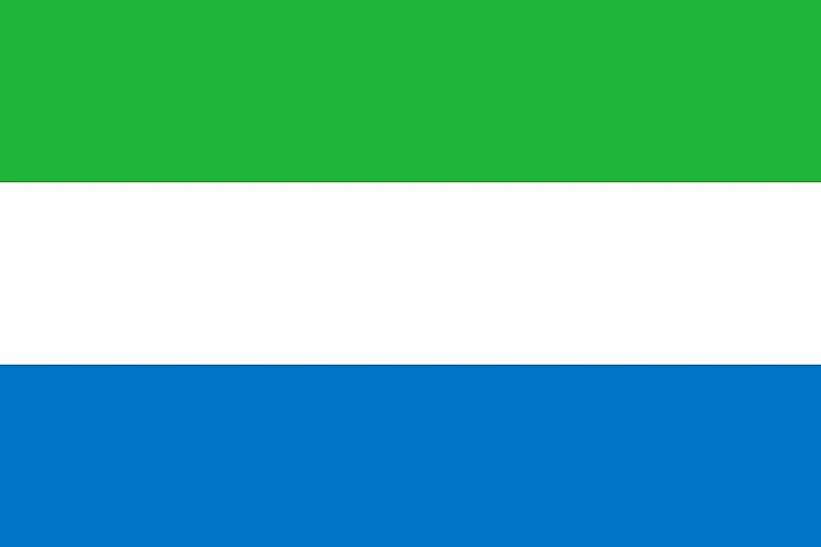
Sierra Leone
| Continent | Africa |
| Capital | Freetown |
| Population | 6,018,888 |
| GDP | $10.64 Billion |
| GDP per Capita | $1,700 |
| Dialing Code | +232 |
| ISO Code (2-letter) | SL |
| ISO Code (3-letter) | SLE |
Sierra Leone Landscapes






About Sierra Leone
Welcome to Sierra Leone, a nation of resilience and natural wealth. With approximately 8.1 million people across 71,740 square kilometers, Sierra Leone combines rich mineral resources with diverse ecosystems, standing as a testament to recovery and renewal in West Africa.
Geographic Features and Natural Beauty
Sierra Leone’s geography encompasses diverse landscapes from coastal mangroves to inland mountains. The country features pristine beaches along its Atlantic coastline, the Western Area Peninsula forests, and the Loma Mountains including Mount Bintumani, the highest peak.
The landscape includes tropical rainforests, savannas, and river systems including the Rokel and Mano Rivers. The country’s varied terrain creates diverse ecosystems supporting unique wildlife species.
Protected areas include Outamba-Kilimi National Park and the Gola Rainforest National Park, protecting endangered species like chimpanzees. The country’s commitment to conservation focuses on preserving biodiversity while promoting sustainable resource management.
Cultural Heritage and Traditions
Sierra Leonean culture represents a vibrant fusion of multiple ethnic traditions, particularly the Mende, Temne, and Creole influences. The country’s heritage includes distinctive music, dance forms, and secret societies maintaining traditional practices.
Traditional arts include wood carving, textile weaving, and distinctive masks. Cultural practices feature initiation ceremonies, storytelling traditions, and the gembeh drum music.
Sierra Leonean cuisine reflects its coastal location and agricultural heritage, featuring dishes like cassava leaves, groundnut stew, and jollof rice. The tradition of communal dining and palm wine sharing remains central to social life.
Historical Journey
Sierra Leone’s history spans from early settlements through British colonization to independence in 1961. The country played a significant role in the abolition of slavery, with Freetown established as a settlement for freed slaves.
Significant periods include the founding of Freetown, British colonial rule, independence, and the civil war (1991-2002). The country’s post-war recovery has demonstrated remarkable resilience.
Modern Economic Landscape
Today’s Sierra Leonean economy focuses on mining, agriculture, and fishing. The country has significant deposits of diamonds, iron ore, and other minerals.
Recent initiatives emphasize sustainable mining practices, agricultural development, and tourism potential. Sierra Leone’s natural resources and young workforce support its economic recovery efforts.
International Relations and Global Position
Sierra Leone maintains active participation in West African organizations while fostering international partnerships for development. The country’s post-conflict reconstruction experience extends its diplomatic influence.
Did You Know?
• Sierra Leone is home to Tacugama Chimpanzee Sanctuary, a leading conservation center?
• The country produced one of the world’s largest diamonds, the 969-carat Star of Sierra Leone?
• Freetown’s Cotton Tree is a historic symbol of freedom for formerly enslaved people?
• Sierra Leone has some of Africa’s finest beaches, including the Turtle Islands?
Conclusion
Sierra Leone represents a remarkable story of resilience and renewal. From its mineral-rich mountains to its pristine beaches, from its traditional customs to its modern development initiatives, Sierra Leone continues to rebuild while preserving its cultural heritage. As it addresses challenges including sustainable resource management and economic development, Sierra Leone remains committed to progress while maintaining its position as a symbol of recovery in West Africa.